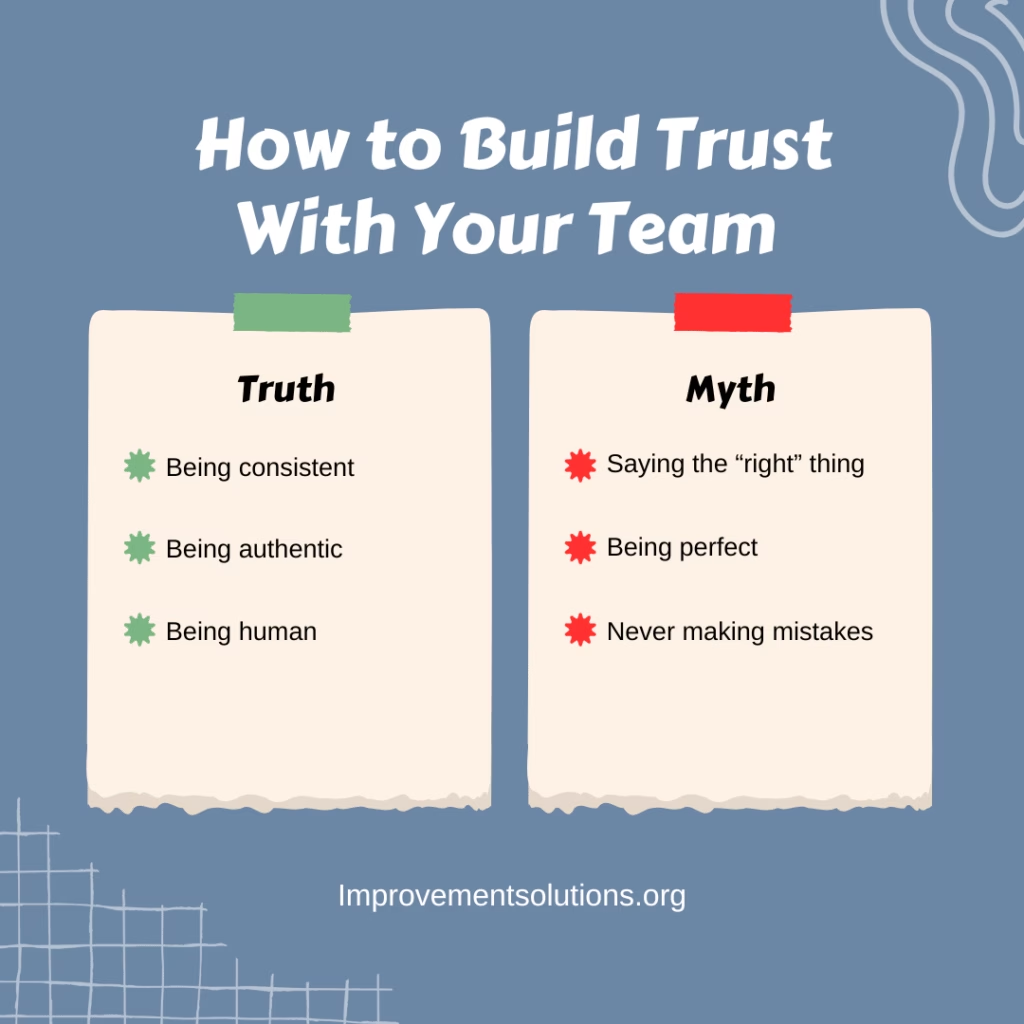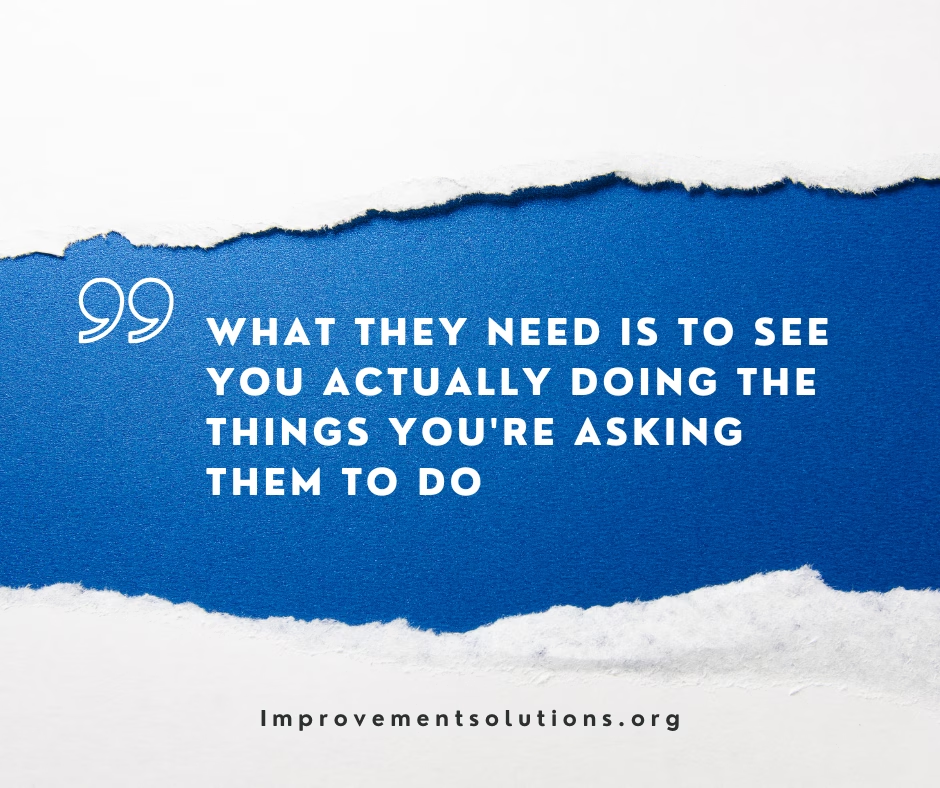It is just a few months into 2025, and it already feels like we’re living in a particularly dramatic episode of “The World: Unpredictable Edition.”
Between natural disasters reshaping landscapes, trade policies keeping everyone on their toes, and the dreaded L-word (layoffs) making headlines again, uncertainty isn’t just knocking at our door; it’s moved in and made itself comfortable.
And if you’re in a leadership role?
How exactly are you supposed to rally the troops when half of them are refreshing LinkedIn “just to see what’s out there”?
How do you plan for Q3 when you’re not even sure what the economic landscape will look like next month?
Here’s the thing: leading through uncertainty isn’t about having all the answers (spoiler alert: nobody does). It’s about showing up, communicating authentically, and helping your team find their footing when the ground keeps shifting.
So grab your coffee (or whatever gets you through the day), and let’s dive into some practical strategies for leading when the only constant is change.
Face The Uncertainty Head On
I get it.
When everything feels unstable, the natural instinct is to put on your best “everything is fine” face and hope nobody notices the chaos swirling around.
But here’s the uncomfortable truth: your team already knows things are uncertain.
They’re not blind, and pretending otherwise just makes you look out of touch.
The most effective leaders right now? They’re the ones willing to stare uncertainty in the eye and say, “Yep, this is weird and uncomfortable, and we’re going to figure it out together.”
That’s how you lead through uncertainty.
Start With The Truth And Acknowledge The Uncertainty
Here’s a radical idea: what if you actually told your team what’s going on?
Not in a “we’re all doomed” way, but in a “here’s what we know, here’s what we don’t know, and here’s how we’re going to navigate it” way.
Your people are already losing sleep wondering if their job is secure or if that important client deal will fall through because of new trade policies.
When you acknowledge these realities instead of dancing around them, something magical happens: trust actually increases.
A study found that 86% of executives say they highly trust their employees, but only 60% of employees feel highly trusted. This points out a huge gap between leaders who think they are being upfront and honest versus how our employees actually feel.
When discussing a current challenges, try:
“I know everyone’s been hearing about potential layoffs in our industry, and I want to be straight with you about where we stand…”
Or
“Yes, the new tariffs might affect our supply chain, and here’s what we’re doing to prepare…”
The key is being honest without being alarmist. Share what you can, admit what you don’t know, and most importantly, outline what you’re actively doing about it.
Listen To Your Team
And I mean really listen to them.
Not the weekly all-hands where you read through PowerPoint slides like you’re announcing departing flights at an airport.
I’m talking about engaging in actual conversations where you ask questions and actually listen to the answers.
- Schedule one-on-ones that aren’t just status updates.
- Ask your team:
- What they’re worried about
- What they need to feel more secure
- What ideas do they have for navigating the current landscape
You might be surprised by how much insight they reveal when you actually give them space to share it.

Your team members are closest to the day-to-day operations. They’re hearing from customers, dealing with vendors, and spotting trends before they hit your executive dashboard.
In times of uncertainty, they’re not just your employees. They’re your early warning system and your best source of creative solutions.
Plus, when people feel heard and involved in problem-solving, they’re way more likely to stick around and weather the storm with you rather than jumping ship at the first sign of trouble.
How To Be The Leader They Can Trust
Trust is kind of like your phone battery. You don’t really think about it until it’s critically low, and then suddenly it becomes the most important thing in the world.
In uncertain times, your team’s trust in you isn’t just nice to have; it’s literally what keeps everything from falling apart.
But here’s the thing about trust.
It’s not built through motivational posters or feel-good team-building exercises.
It’s built through consistency, authenticity, and showing up as a real human being rather than a corporate robot programmed to say the “right” things.

Be Real, Transparent And Honest
Remember when you were a kid and you could instantly tell when an adult was lying to you?
Well, your team has that same superpower. They can smell corporate BS from three conference rooms away.
A study in Harvard Business Review found that employees in workplaces with high-trust are 76% more engaged.
That means for every 4 people in a low-trust environment, only 1 feels motivated and committed. But when leaders lead with transparency and trust, 3 out of 4 team members bring more creativity, energy, and focus to their work.
Being transparent doesn’t mean you need to share every gory detail of board meetings or air all your personal anxieties.
It means being genuine about:
- What you know
- What you’re worried about
- What you’re doing to address challenges
When you mess up (and you will), own it. When you don’t have answers (and you won’t), admit it.
Instead of corporate speech, try this:
“Honestly, I’m not sure how the market changes will affect us long-term, but here’s what I’m seeing so far…”
or
“I made a call last month that didn’t pan out the way I hoped, and here’s what I learned from it…”
Your team doesn’t need you to be perfect. They need you to be real.
Balance the Message
Here’s where things get tricky. You need to be honest about challenges without turning every conversation into a disaster movie trailer.
It’s like being a weather forecaster during hurricane season. You need to prepare people for storms without making them want to move to a bunker permanently.
The magic is in the “and” statements:
“Yes, we’re facing some budget constraints, AND we’re finding creative ways to do more with what we have.”
Or
“The industry is going through major changes, AND we’re positioning ourselves to come out stronger.”

Don’t toxic-positive your way through real problems, but also don’t doom-spiral your team into paralysis.
Acknowledge the reality, then pivot to what you’re actively doing about it and what opportunities might exist within the challenge.
Avoid The Trap Of Easy Answers
When people are stressed and uncertain, they desperately want someone to swoop in with a simple solution that makes everything okay again.
Resist this urge with every fiber of your being.
Quick fixes might make you feel better temporarily, but they often make things worse. Your team is smart enough to handle nuance, and they’d rather have a complex truth than a simple lie.
Instead of saying:
“Don’t worry, everything will work out fine” (which nobody believes anyway)
Try:
“This situation is complicated, and we’re going to work through it step by step. Here’s what we’re focusing on first…”
The goal isn’t to eliminate uncertainty; that’s impossible.
The goal is to help your team feel confident that you’re navigating uncertainty thoughtfully and that they’re in capable hands, even when those hands don’t have all the answers.
How To Lead With Calm And Clarity
Ever notice how when the flight attendant stays calm during turbulence, you somehow feel a little less like you’re about to plummet to earth? That’s not an accident.
When everything around us is chaotic, people look to their leaders like emotional barometers.
If you’re freaking out, they’re freaking out.
If you’re steady (or at least appear to be), they can focus on doing their jobs instead of spiraling into worst-case scenarios.
But here’s the plot twist: leading with calm doesn’t mean you have to actually BE calm all the time.
It means you need to get really good at managing your energy and choosing when and how to express your concerns.
Keep Your Cool (Even If You’re Panicking On The Inside)
Sometimes you’re going to feel like a swan: serene on the surface, paddling like hell underneath.
And that’s totally normal.
The trick is learning to compartmentalize your anxiety so it doesn’t become everyone else’s problem.
This doesn’t mean becoming an emotionless robot or pretending everything is fine when it’s clearly not.
It means being intentional about how you show up.
Save the full-blown panic sessions for your trusted advisor, your therapist, or your journal. When you’re with your team, channel that nervous energy into focused problem-solving.
Try this: Before walking into any team meeting or important conversation, take 30 seconds to ask yourself, “What energy do I want to bring into this room?”
Then consciously choose to embody that energy, even if you have to fake it at first.
Your team needs to see you as their steady anchor, not another person drowning in the same storm they’re already fighting.
They have enough uncertainty swirling around them; they don’t need yours added to the mix.

Get Comfortable Being Uncomfortable
Here’s an uncomfortable truth about leadership in uncertain times: discomfort is now part of your job description. The sooner you accept that feeling unsettled is the new normal, the better you’ll get at operating within it.
Most people hate the feeling of not knowing what’s coming next.
But as a leader, you need to model what it looks like to function effectively despite uncertainty.
It’s scarier and requires more attention, but it’s absolutely doable once you adjust your approach.
Start small.
Practice sitting with uncomfortable questions in meetings instead of rushing to fill every silence with an answer you don’t actually have.
Get comfortable saying, “I don’t know yet, but here’s how we’ll figure it out.” Learn to make decisions with incomplete information (because let’s face it, that’s all any of us ever have anyway).
The more comfortable you become with uncertainty, the more your team will trust your ability to navigate through it. They’ll stop looking to you to eliminate all the unknowns and start trusting you to help them move forward despite them.
And honestly?
Once you stop fighting the discomfort and start working with it instead, you might be surprised by how much clearer your thinking becomes.
When you’re not wasting energy trying to control the uncontrollable, you can focus on the things that actually matter (like making smart decisions with the information you do have and helping your team do the same).
How To Plan Smarter, Not Just Harder
Remember that friend who thought they could solve their financial problems by working 80-hour weeks at the same job that wasn’t paying them enough? Don’t be that leader.
When everything is uncertain, the knee-jerk reaction is often to just do MORE of everything. More meetings, more planning sessions, more contingency plans for your contingency plans.
But working harder in uncertain times without working smarter is like trying to navigate a maze by running faster. You’ll just hit more dead ends more quickly.
Smart planning in 2025 means being strategic about where you focus your energy, showing your team what good decision-making looks like, and actually letting other people help you.
Show, Don’t Just Tell
Your team doesn’t need another inspiring speech about “pivoting with agility” or “embracing change.”
What they need is to see you actually doing the things you’re asking them to do. They need to watch you make tough decisions, adapt when plans fall apart, and handle setbacks without losing your mind.
Think of yourself as the lead actor in a very long improv show where your team is both the audience and the supporting cast.
They’re watching how you handle plot twists, how you recover from mistakes, and how you work with incomplete scripts. Your actions are teaching them how to behave when their own plans inevitably go sideways.
So when you have to pivot strategy mid-quarter, walk them through your thinking process.
When you make a decision based on limited information, explain your reasoning.
When something doesn’t work out, show them how you analyze what went wrong and adjust course without spiraling into blame or regret.
The goal isn’t to pretend you’re perfect.
The goal is to model what thoughtful problem-solving looks like when you don’t have all the answers.
Your team will learn more from watching you navigate one real challenge than from a dozen theoretical discussions about “change management.”

Don’t Be A Lone Hero
Here’s a hard truth that many leaders struggle with: the superhero approach to leadership is not only outdated, it’s actually counterproductive in uncertain times.
You know the type: the leader who thinks they need to have all the answers, make all the decisions, and shield their team from every challenge.
That might have worked when business was predictable and you could reasonably expect to stay on top of everything.
But in 2025? Good luck with that.
The challenges are too complex, the pace of change is too fast, and frankly, we are not as smart as we think we are (none of us are).
Smart leaders are building distributed intelligence networks, not trying to be the single point of genius. They’re asking their team members to own pieces of the puzzle, contribute their expertise, and share the cognitive load of navigating uncertainty.
This means actually delegating meaningful decisions, not just busy work. It means asking for input and then actually using it.
It means being okay with the fact that sometimes your marketing manager could have better insights about customer sentiment than you do, or your operations lead could spot supply chain issues before they hit your radar.
When you spread the responsibility for problem-solving across your team, two amazing things happen:
- You make better decisions because you’re working with more information and diverse perspectives
- Your team becomes more resilient because they’re practiced at handling challenges instead of waiting for you to solve everything.
Plus, if you’re the only person who knows how to handle crises, what happens when you’re sick, on vacation, or (heaven forbid) you decide to take that job offer you’ve been secretly considering?
Building other people’s capabilities isn’t just good leadership; it’s good risk management.
Ready to Stop Flying Blind?
Uncertainty isn’t going anywhere. If anything, it’s likely to become a constant companion as we move through 2025.
The question isn’t whether you’ll face more unpredictable situations, it’s whether you’ll be ready for them.
The leaders who are going to be able to lead through uncertainty are the ones who stop treating uncertainty like a problem to be solved and start treating it like a skill to be developed.
They’re building their uncertainty tolerance like a muscle, creating systems that can bend without breaking, and developing teams that can think on their feet instead of waiting for instructions.
Reading about these strategies is one thing.
Actually implementing them when you’re in the middle of a crisis, your inbox is exploding, and your team is looking to you for answers you don’t have? That’s a whole different ball game.
That’s exactly why I created Leading Through Uncertainty in 2025. A comprehensive guide that goes way beyond what we’ve covered here.
Inside, you’ll find step-by-step frameworks for navigating workplace uncertainty, scripts for those tough conversations you’ve been avoiding, and practical tools for inspiring your team even when you’re not feeling particularly inspired yourself.
Think of it as your uncertainty survival kit: the resource you’ll actually reach for when things get messy, not just when you have time to read leadership theory.
Because here’s what I know: you didn’t sign up to lead during easy times.
You signed up to lead, period. And right now, your team needs you to show up as the leader who can navigate uncertainty with confidence, clarity, and maybe even a little bit of grace.
Download Leading Through Uncertainty in 2025 and get the complete roadmap for turning uncertainty from your biggest challenge into your strongest leadership skill.
Your future self (and your team) will thank you.
Ready to for more extensive help to become a leader who can lead through uncertainty? Contact us and set up a meeting today!
